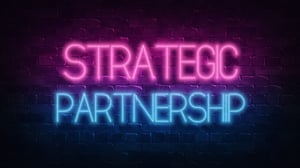
Your Mindset and Approach
You need a strategic mindset and approach to establish
- Making customers, rather than finding This means earning more time with the customer, with an open invitation to continue a dialogue, and with a sincere commitment on the customer’s part to take action.
- Leading the customer to your solution, i.e. they come to the conclusion that your solution is best for their organization, rather than fulfilling the requirements that have already been established.
- Working strategically toward a business process change, rather than tactically for a project, or even a program. Don’t focus on or limit yourself to procurement/purchasing.
- Building a network of advocates with multiple decision makers and influencers. The value of multiple relationships cannot be understated. Decision makers and influencers change roles and responsibilities.
- Getting your customer to think differently about how they operate and see the benefit of making changes, even ones that can be disruptive.
Get Past the Commodity Print Sale
Your discussions should not focus on a single project. Once you get an entrée in the account, you must re-frame the conversation from project to program.
A program sales cycle involves different business issues and different players, especially those outside of Purchasing. It’s about selling to the decision makers in the departments, who then provide their requirements to Procurement.
Get there first!

Focus on situations where you are there first, and haven’t been called in by the customer. A customer who calls you in to give a presentation has likely already chosen a frontrunner and is simply looking for comparison points.
Customer Receptivity to (and Reasons for) Change
Focus on customers who are receptive to change and have an emerging set of needs. This is something you may not have done in the past. You must heavily influence how the customer thinks about their business, and how the customer will approach the emerging issues.
While it’s critically important to figure out if the customer is receptive to change, it’s equally important to know their reasons for making a change.
Within an organization, different people have different degrees of receptivity to change and differing reasons.
Working with Committees
For more complex high-value business partnerships, the stakes are high and decisions are often made by committees.
The #1 reason sales people fail is that they spend 60% of their time with people who can’t or won’t buy.
Selling to one person is tough enough. When two or more people have to sign off on the deal, selling becomes a lot more complicated – a series of decisions must take place, not just one.
The decision team can range in size from a couple of people to a large committee with members in multiple locations.
Either way, you need to quickly identify who has the most buying authority and who is included as an influencer.
Challenges with Multiple Decision Makers
Think of each decision maker as a separate sale. Keep in mind that different decision makers may be looking at entirely different aspects of the solution.
Building rapport is even more important when dealing with multiple decision makers than it is with a single decision maker. You'll need to earn enough trust so that all the decision makers are comfortable discussing what matters most to them.
Armed with this knowledge, you’ll invest your effort in presenting the benefits that resonate with each decision maker.
Consider the following conditions that impact the way you need to handle individuals:
| Member Availability | Depending on the makeup of the group (executives, department/program heads, etc.), it can be very difficult to assemble all the members at one time. Each one of them has other primary responsibilities that may limit their scheduling flexibility. |
| Lack of group ownership | Many times, due to politics and the temptation to “hide” in the group, you may find that no one takes ownership. For some people, it’s easier to vote with the majority rather than stand up for what they think is truly best. |
| Member motivation and commitment level | Different motivations and levels of commitment can slow down the decision making process. If a committee member’s department or individual responsibilities won't be affected by the decision, their level of interest may wane and they may simply vote with the majority rather than giving the proposal their complete consideration. |
| Conflicting personalities | Groups and committees are often the place where individual vendettas come out. A member may have ill feelings toward another and his decision may be rooted mostly in spite. Rather than making a decision that's in his company's best interest, he discards sound reasoning and feels victorious in squashing his foe's recommendation. |
| Individual buying motives | Although the group may have criteria for members to adhere to in making their decisions, when it comes down to it, each person will make his or her own buying decisions based on personal buying motives. |
A common mistake is to try to sell to the group rather than the individual members. Often there isn't a dominant buying motive for the group as a whole.
What’s more relevant are the goals and biases of each stakeholder, as well as their business and personal objectives.
Planning for Success
Identify your committee members, decision makers and influencers.
For each one, determine:
- Their goals and biases
- Their business objectives for their function/department
- Their personal objectives for their career or personal interests
- The conditions that may impact sales efforts for individuals


